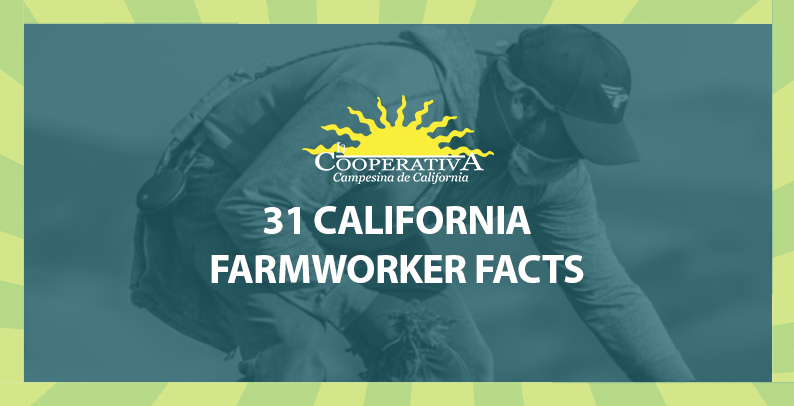- California farm workers help produce over 350 commodities; including 1/3 of the nation’s vegetables and nearly 2/3 of the nation’s fruits and nuts.
- California produces 90% of the strawberries grown in the U.S.
- Between 1/3 and 1/2 of all farmworkers in America reside in California, or roughly 500,000 – 800,000 farmworkers.
- Approximately 75% of California’s farmworkers are undocumented.
- National Labor Relations Laws (NLRA) do not apply to farmworkers.
- Farmworkers are exempt from many Fair Labor Standards Act (FSLA) protections, including most minimum wage and hour guarantees, overtime pay, and mandatory breaks for rest and meals.
- Most farmworkers are excluded from federal minimum wage laws and other labor protections, including overtime pay for working more than 40 hours per week.
- Farmworkers are not protected from retaliation when engaged in labor organizing, according to federal law.
- Farmworkers are not entitled to receive attorney fees under the Migrant and Seasonal Agricultural Worker Protection Act.
- Approximately 78% of farmworkers lack a high school diploma or equivalent.
- Only 21% have a diploma or GED, and just over 1% have a college degree.
- Around 30% of households with farmworker income fall below the poverty line, and 73% earn less than 200% of poverty (a threshold used in many public assistance programs).
- Monterey, Fresno, and Kern counties have the largest number of farmworkers in the state regardless of population.
- The counties with the lowest proportions of farmworkers are located in the Los Angeles basin, the Bay Area, and Sierras.
- Tulare, Madera, Monterey, and San Benito counties have the highest proportion of farmworkers.
- The majority of hired farmworkers in California (84%) were born in Mexico.
- Hispanic workers made up 96% of all farmworkers in California, with 65% of U.S.-born workers identifying as Hispanic.
- About 9% of California farmworkers identified as indigenous.
- Men made up 69% of California’s farm labor force.
- The average and median ages of California farmworkers is 39.
- About 63% of California farmworkers were married, and 58% had children.
- 32% of California farmworkers were living apart from their nuclear family members. Of those living alone, 73% were single workers without children, 22% were parents, and 5% had a spouse but no children.
- Nearly all California farmworkers (89%) reported Spanish as their primary language.
- Only 16% of California farmworkers reported being able to speak English “well,” while 35% said they could not speak English at all. Similarly, only 15% reported being able to read English “well,” while 47% could not read English at all.
- The average level of formal education completed by California farmworkers was eighth grade.
- About a quarter (25%) of California workers reported taking at least one adult education class in the U.S.
- Only 9% of California farmworkers lived in housing owned or administered by their current employer.
- Detached, single-family houses were the most common type of housing for California farmworkers (57%), and about a third (35%) lived in crowded dwellings.
- Most California farmworkers (76%) lived fewer than 25 miles from their current job, while only 7% lived where they worked.
- The majority of California farmworkers drove a car to work (65%), while 14% rode with a “raitero” (a shared ride service), and 2% took a labor bus, truck, or van.
- Employer health insurance coverage for farmworkers did not change detectably with the rollout of the ACA employer mandate, regardless of a farmworker’s documentation status or whether the worker was a direct hire versus a contractor.
Sources:
California Department of Food and Agriculture. (2012). California Agricultural Statistics Overview.
United States Census Bureau. (2012). American Community, Survey 2009-2011 Public Use Microdata.
PPIC: https://www.ppic.org/publication/health-care-access-among-californias-farmworkers/



